As opposed to recent weeks, this week was full of activity and photography. From Monday to Wednesday I attended the annual conference of the European Policy for IP Association, this year held in truly great surroundings, at the Jagiellonian University in Kraków. This was followed by an all day meeting of economists from IP offices around the world on Thursday. And Thursday evening I took a train to Wrocław to spend the weekend with my sister and brother-in-law who live there.
37_1
I landed in Kraków in early afternoon on Sunday. The conference organisers were giving me the VIP treatment, so I was picked up at the airport and driven to my hotel. Once installed in the hotel, I walked to the central square, about 1 km away. Along the way I looked for some late lunch options, and to my delight I saw this Ukrainian place on Zwierzyniecka Street:
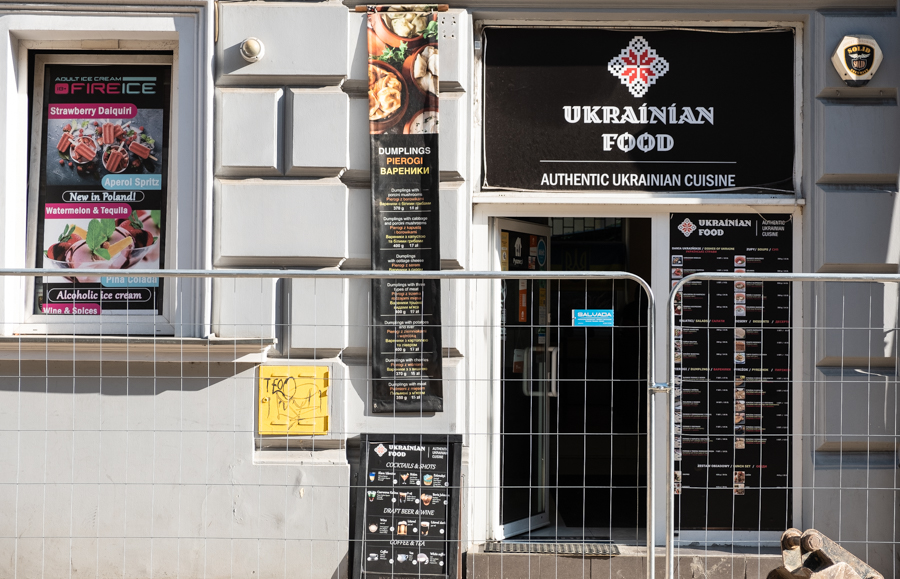
37_2
I went inside and liked what I saw:
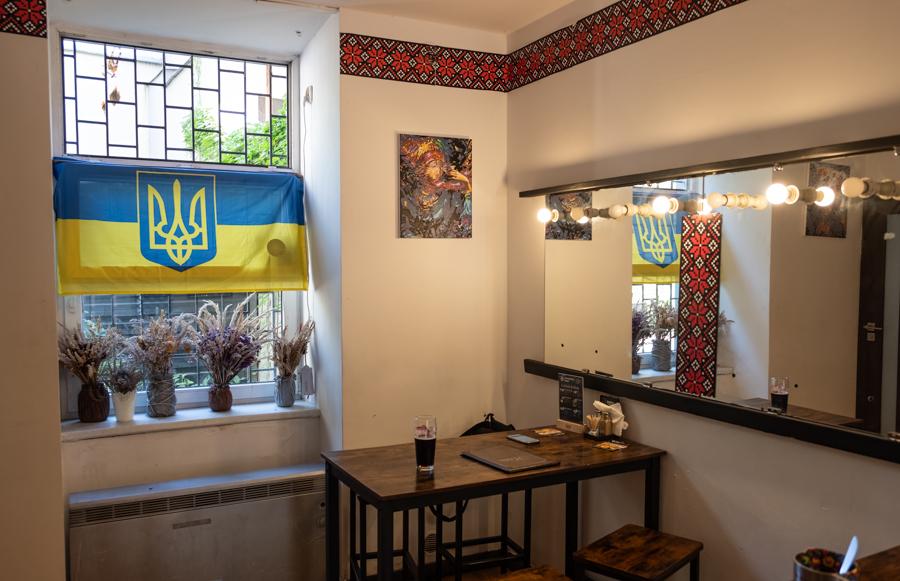
37_3
I also liked these delicious pierogi:
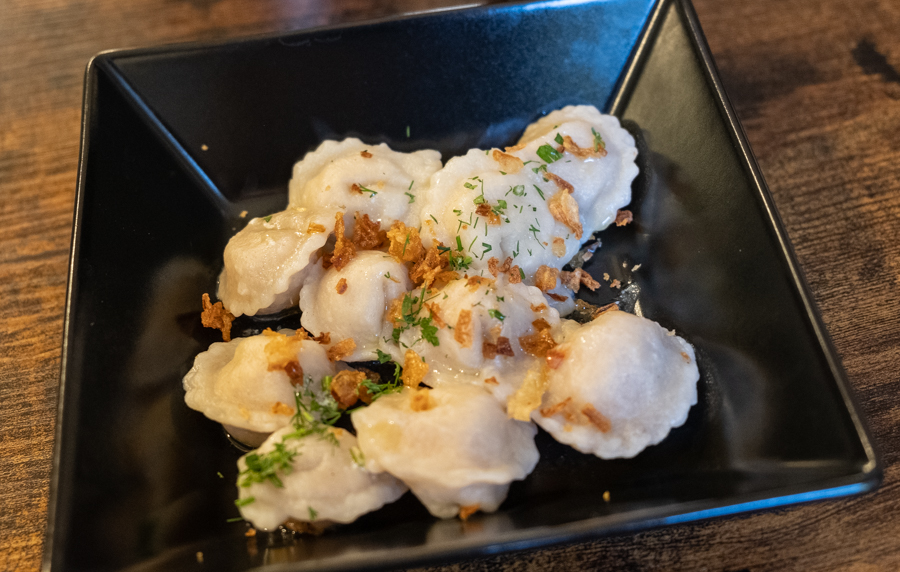
37_4
The address Franciszkańska Street 3 is the location of the Bishops’ Palace. During his first trip to Poland after being elected pope in 1979, John Paul II stayed here and spoke to the people from the window. Today it is a place of pilgrimage for some, known as the Pope’s Window:
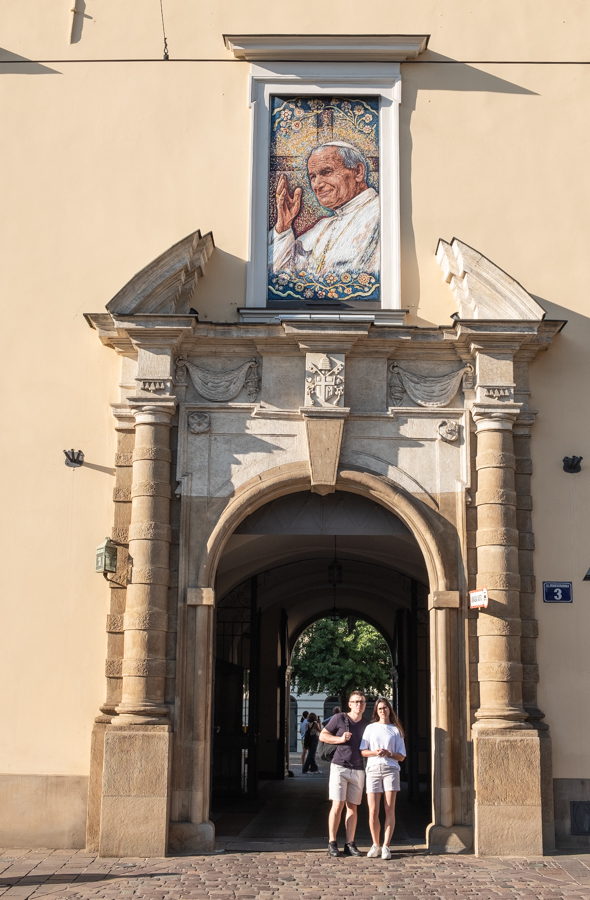
37_5
Further down the street, there was an exhibition about climate change and its impact on Kraków, consisting of posters showing a series of sceptical statements such as “what’s the problem, we’ll have nicer weather” and then debunking them:
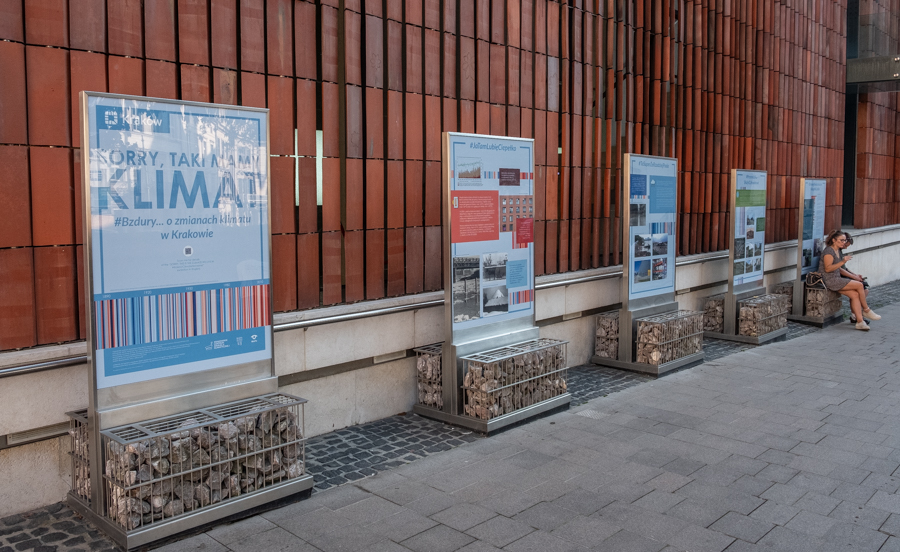
37_6
Kraków’s main square is called Rynek, as is the case in almost every Polish city (it simply means “market square”). It is a beautiful, large square, lined with bars and restaurants. Many people were out and about, some relaxing in the shade:
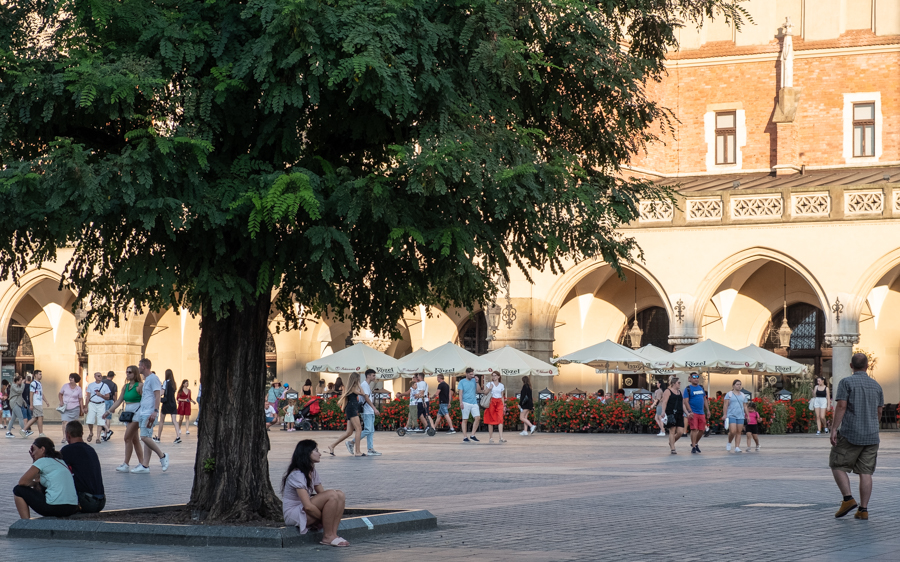
37_7
I met up with my ex-trainee Antanina, who was also in town for the conference. We had a drink to celebrate that she recently landed a steady job as a lecturer at London Metropolitan University:
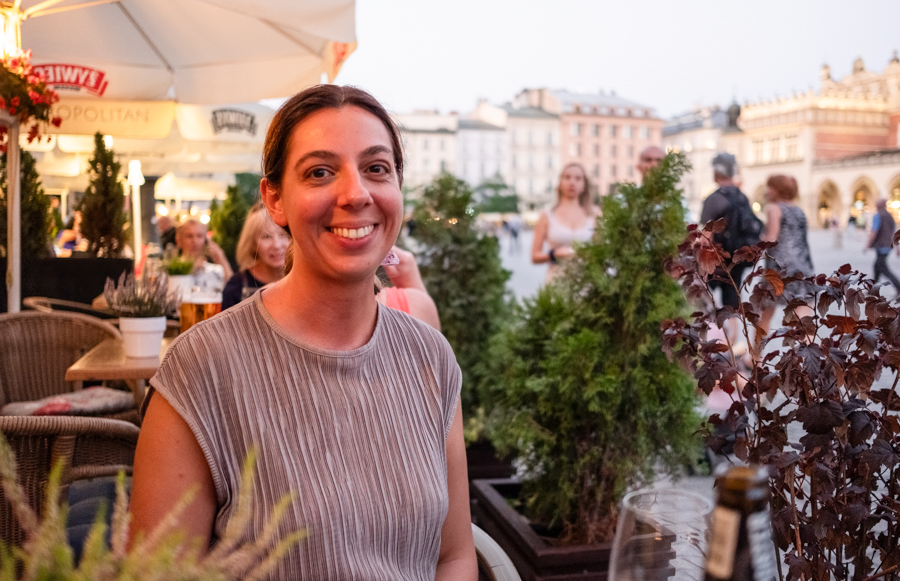
37_8
The night fell, and Rynek looked even more beautiful:
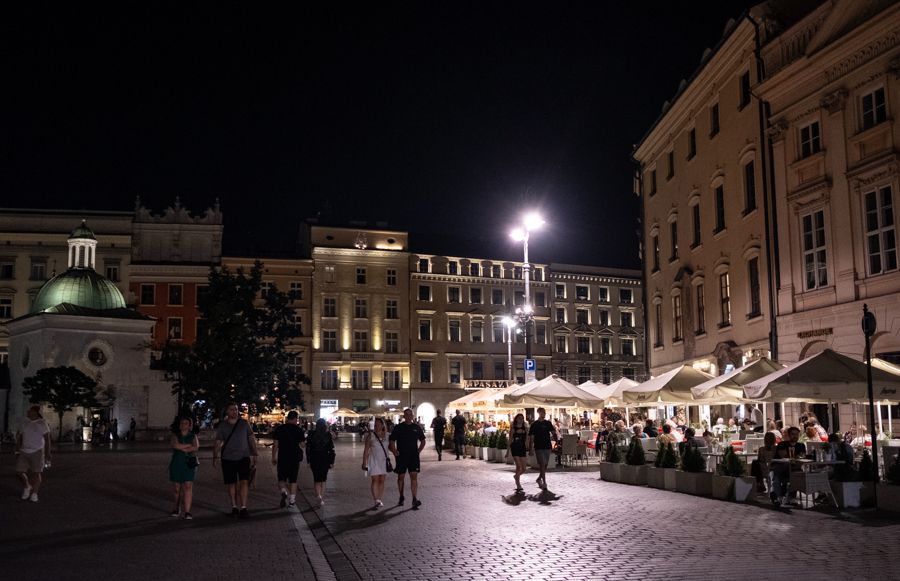
37_9
The conference was starting just after lunch on Monday, so I used the morning to visit the Jewish neighbourhood Kazimierz, a place I always go when in Kraków. It was about 2 km’s walk from my hotel. As I walked, I looked for little details as usual, including these stickers on a light pole, reflecting the wide range of international visitors in the city:
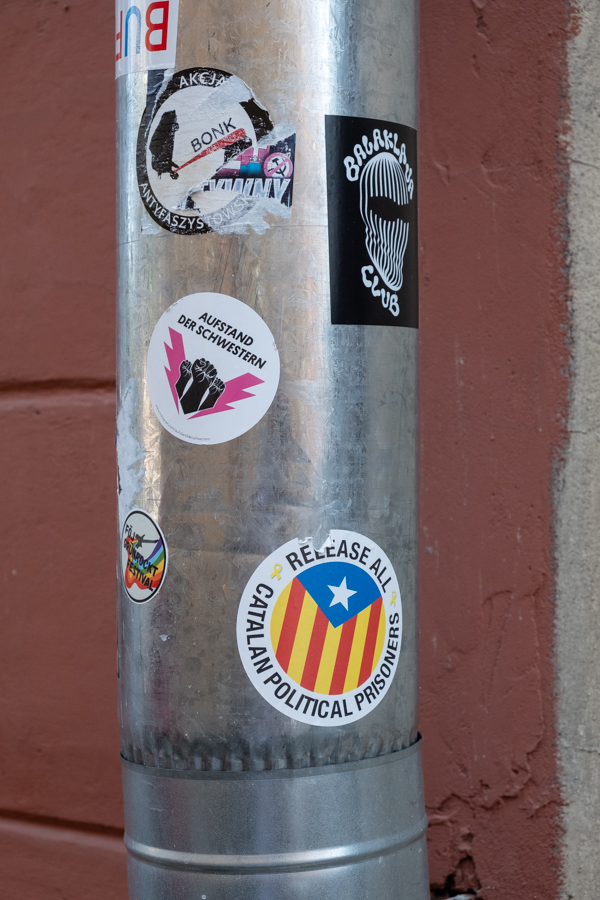
37_10
The revival of Jewish life in Poland (in cities like Kraków or Warsaw) is to a high degree driven by young Poles discovering their Jewish roots. In Kazimierz, there was a Hillel house with posters in the window announcing various events–now also in Ukrainian, targeting the many refugees in this part of Poland:
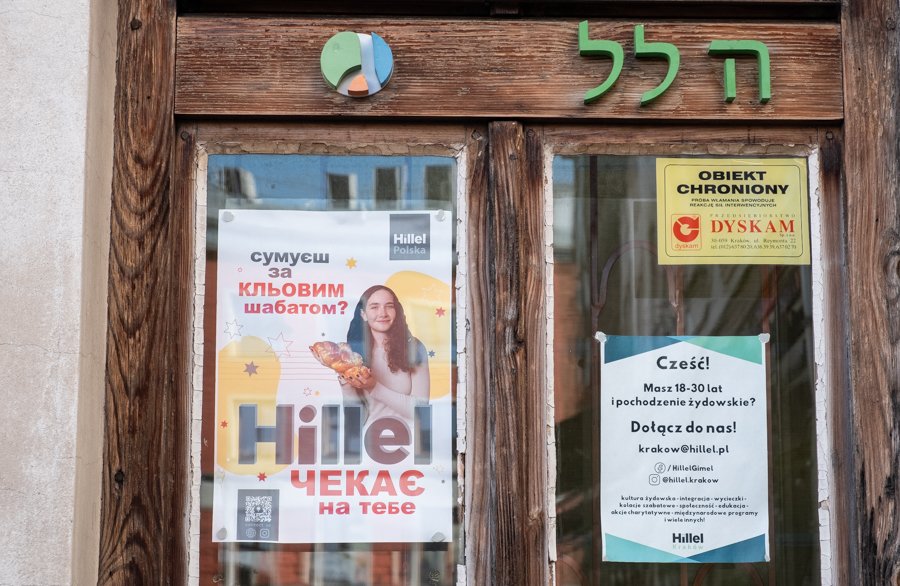
37_11
The Jewish Community Centre, with a poster reaching out to the young, “did you grandmother bake challah? Did you grandfather spin the dreidel?”:
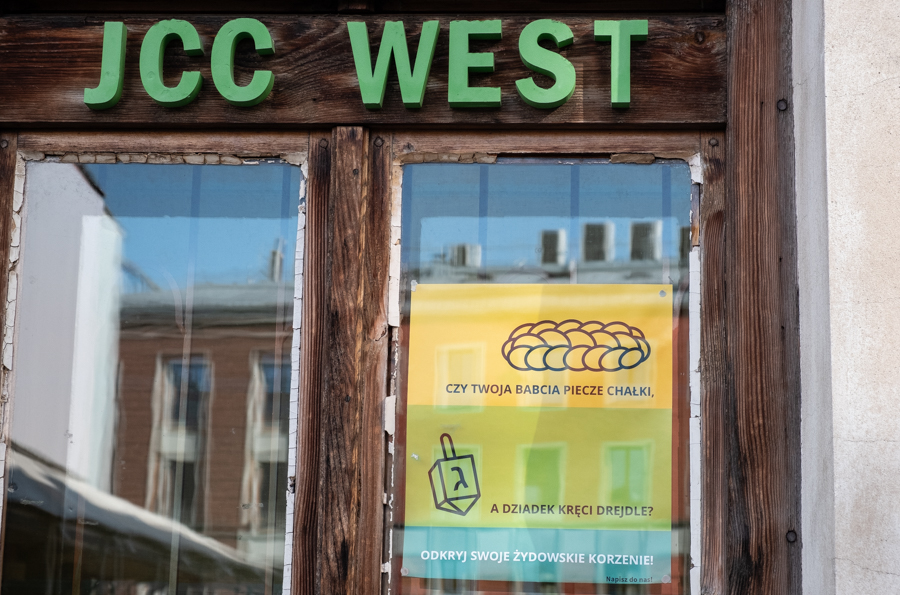
37_12
A cryptic message on a wall, “I am looking for a world that does not exist”:
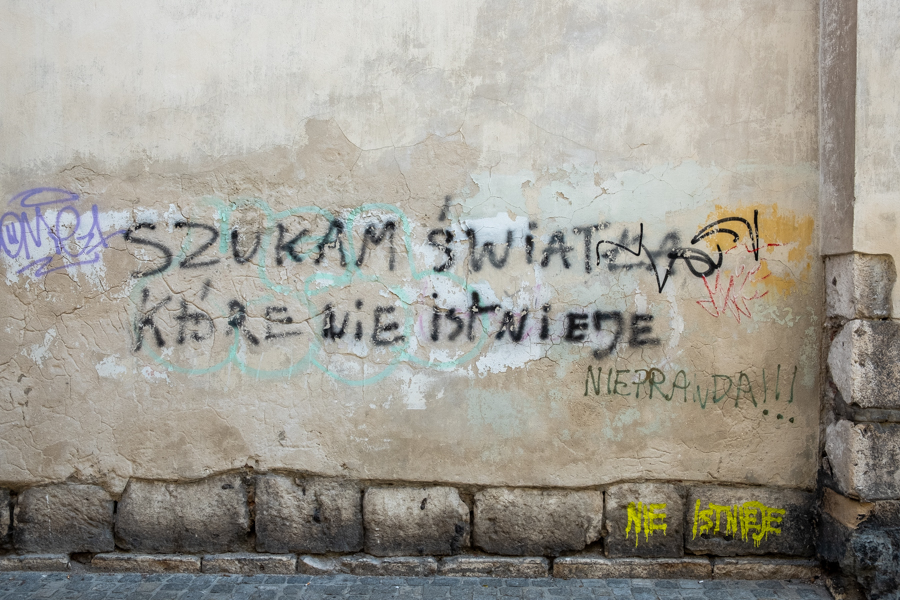
37_13
I entered the heart of Kazimierz and visited the Remuh synagogue, Kraków oldest, in use since the 16th century. It is tiny but there are always people visiting or praying:
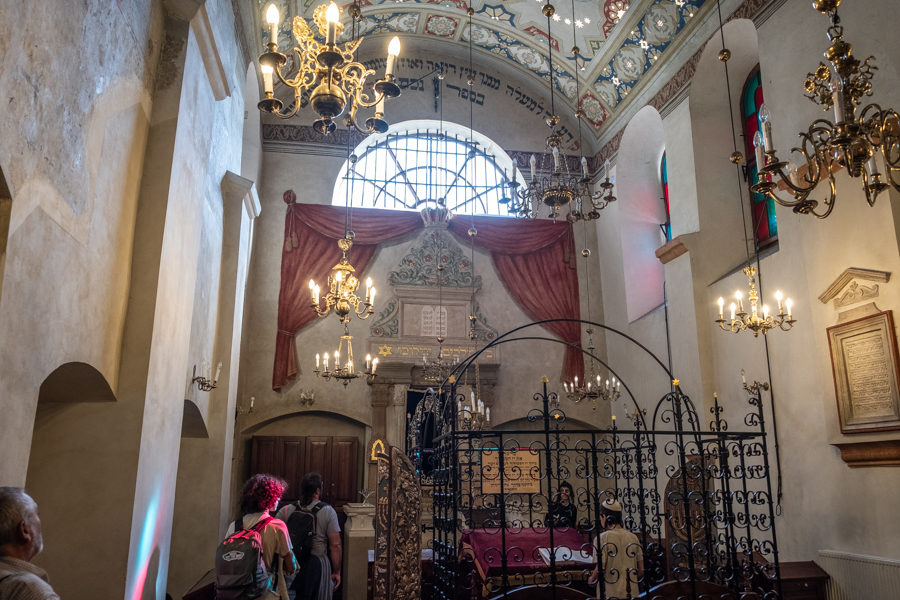
37_14
A boy reading the Torah:
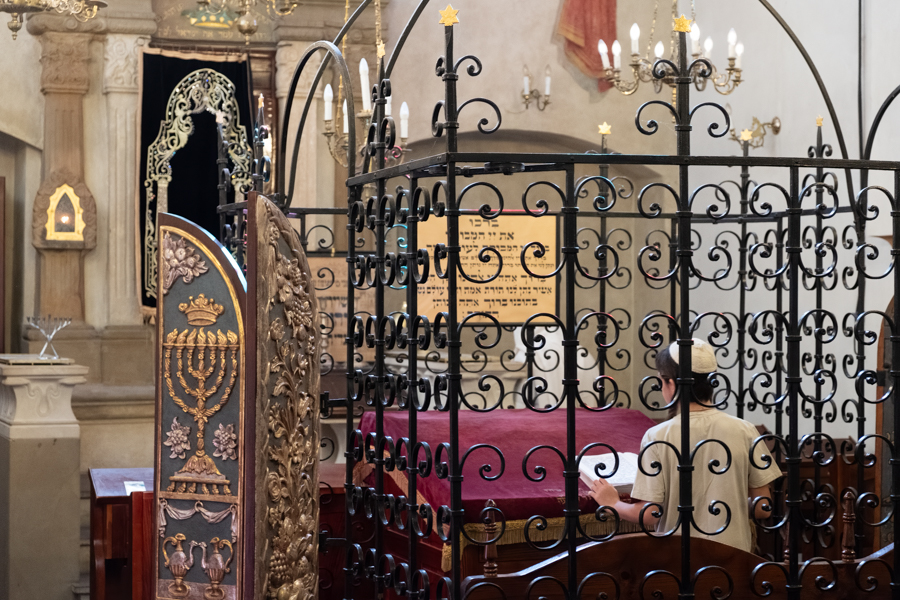
37_15
There are always many Orthodox visitors from Israel in Kazimierz, and I met some of them in the cemetery adjacent to the Remuh synagogue. They invited me to join them in lighting candles on the tomb of a famous rabbi from centuries past:
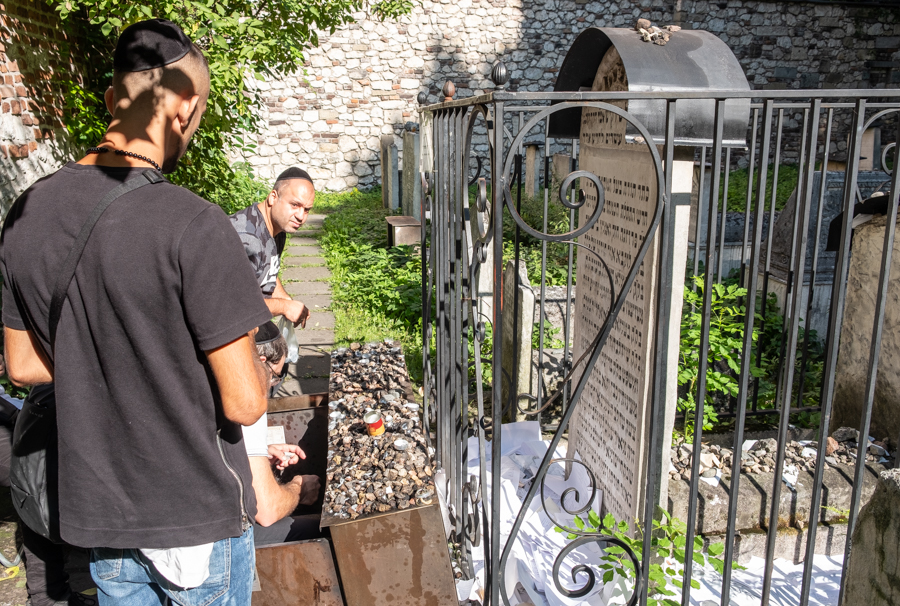
37_16
After my visit to Kazimierz, I walked back to my hotel, changed into the business clothes, and walked to the nearby Jagiellonian University to attend the opening of the conference. The location is called Collegium Novum, and it is quite impressive. This particular building dates from the 19th century, but the university itself was founded in the 14th century and is Poland’s oldest:
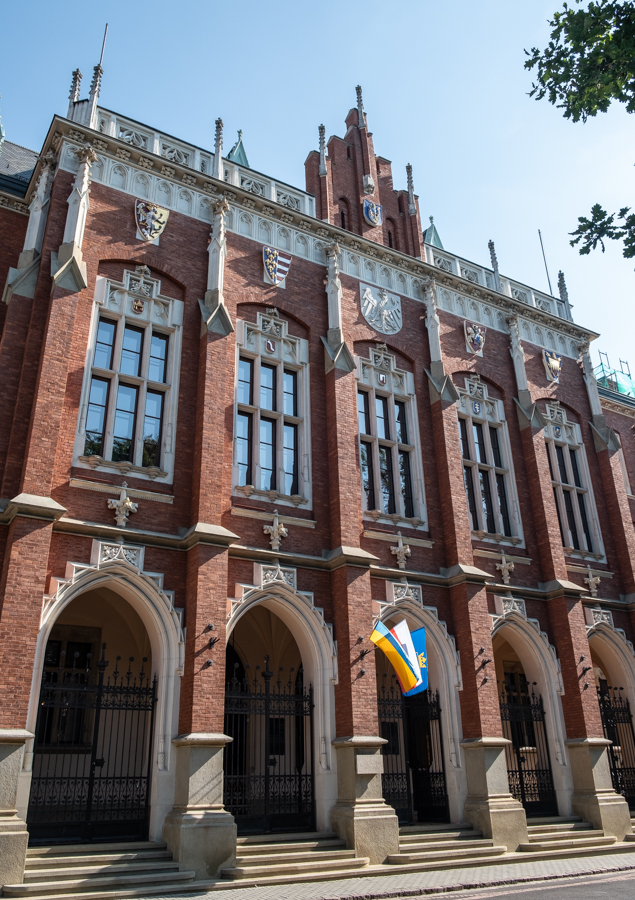
37_17
The professor in charge of the conference, Justyna Ożegalska-Trybalska, looks on while the dean opens the event:
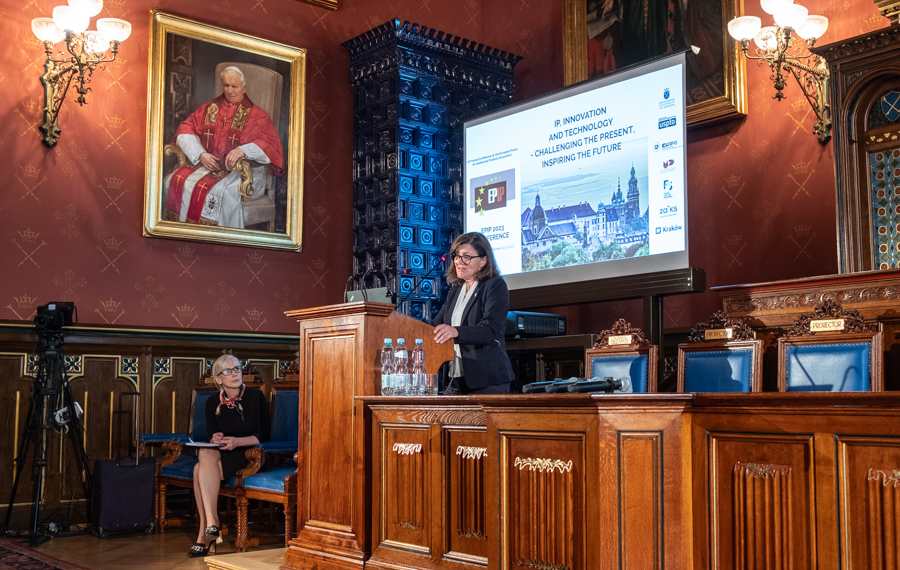
37_18
One of the keynote speakers, Advocate General Maciej Szpunar from the European Court of Justice (he is Polish, yes):
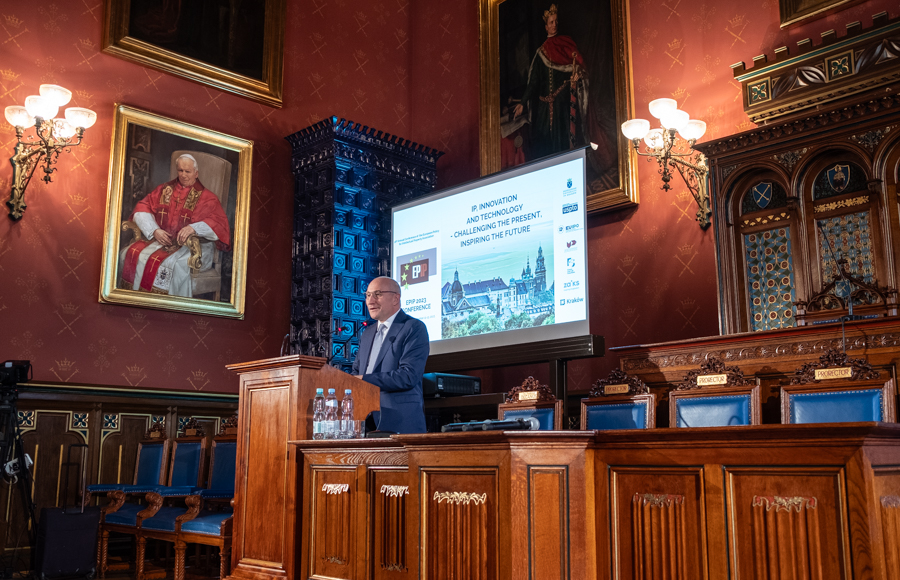
37_19
After the opening, there was a nice outdoor reception, during which I chatted with many old friends, including Joasia from the Polish Patent Office, here with my ex-trainee Antanina:
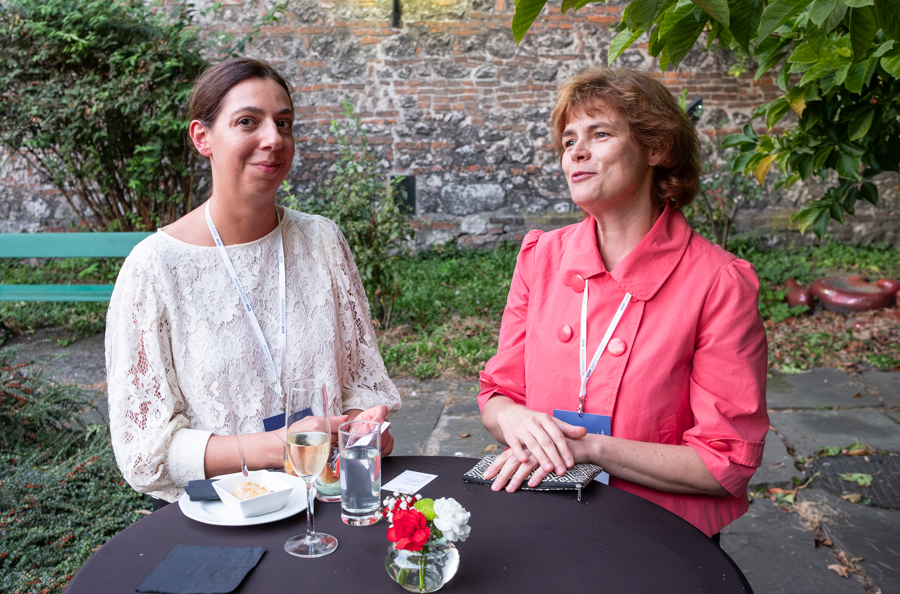
37_20
My colleague Carolina talks to Andy Toole, Chief Economist of the US Patent and Trademark Office. This is a truly international gathering:
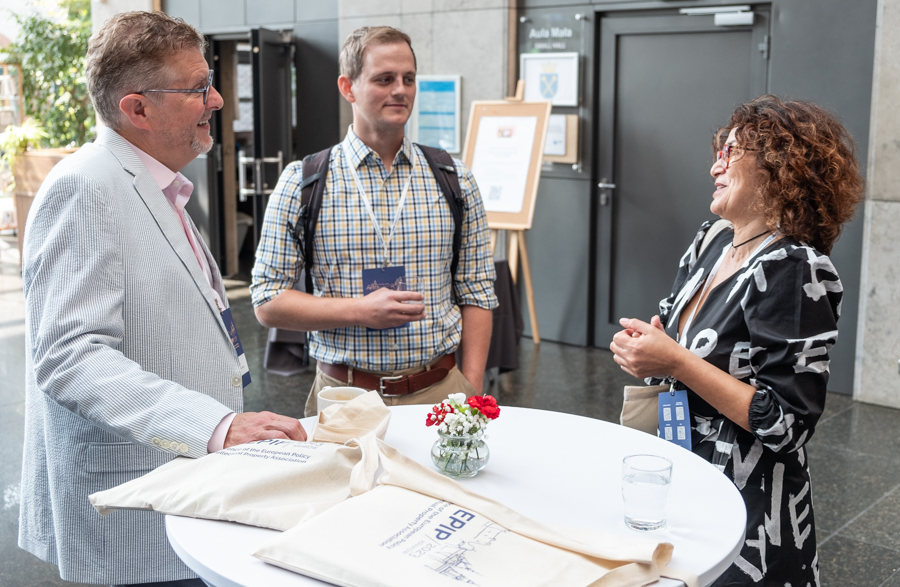
37_21
The next day I had some free time which I used to visit the modern art museum MOCAK, located next to Schindler’s factory in what used to be the Kraków ghetto. To get there, I had to walk 3 km, but it was a nice walk along the river, with views of the royal castle Wawel:
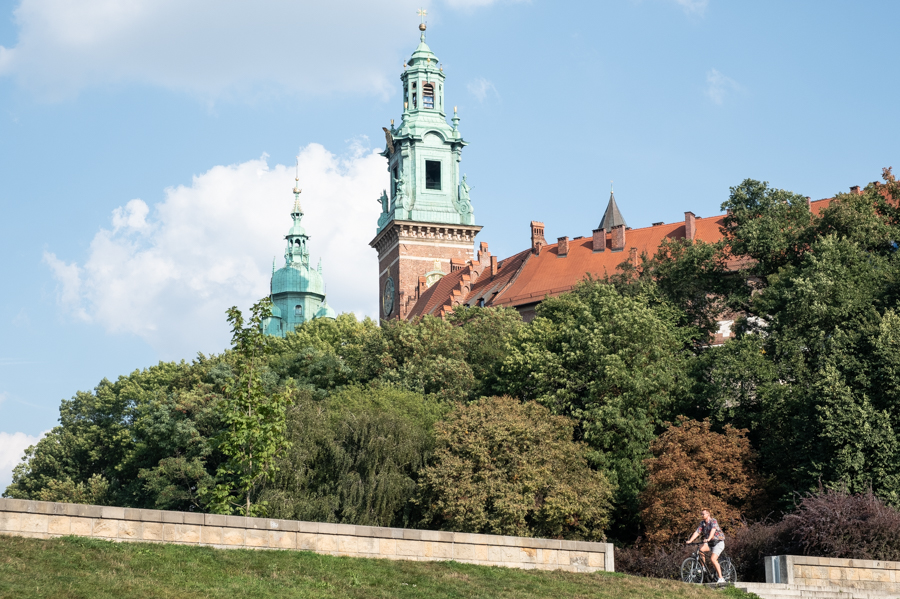
37_22
I crossed the Vistula river on a new pedestrian/cyclist bridge called Father Barnatek’s Bridge:
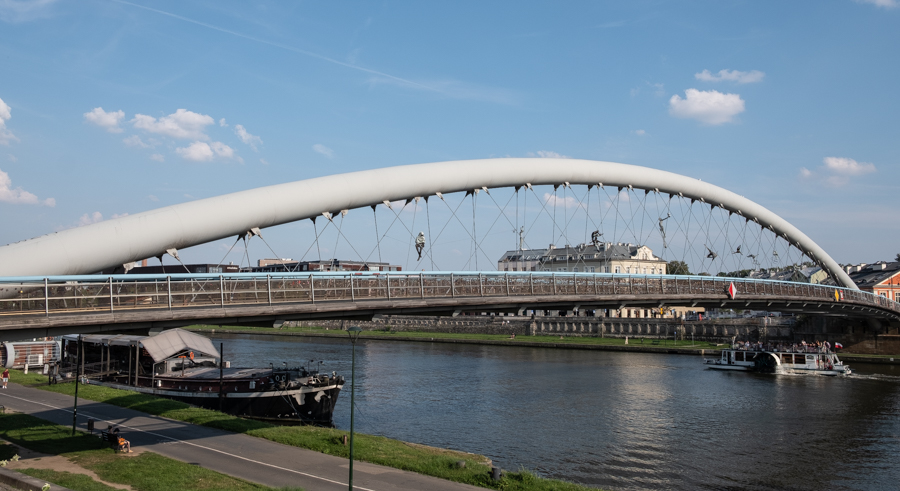
37_23
A few minutes later I was at the Square of the Heroes of the Ghetto, a unique and moving memorial to the people who perished:
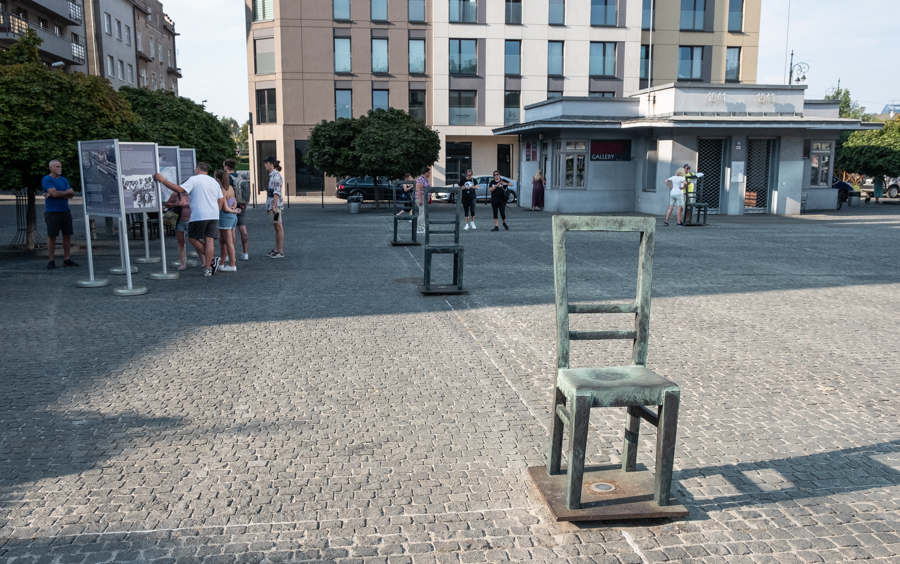
37_24
I then arrived at the Modern and Contemporary Art Museum of Kraków (MOCAK), a place I have visited before and always enjoyed. This time was no exception. There were a couple of great exhibitions, including one of the “Kraków school” of artists that existed from the the 1960s until the late 1990s or so. One of those artists was Jan Pamuła, who died last year:
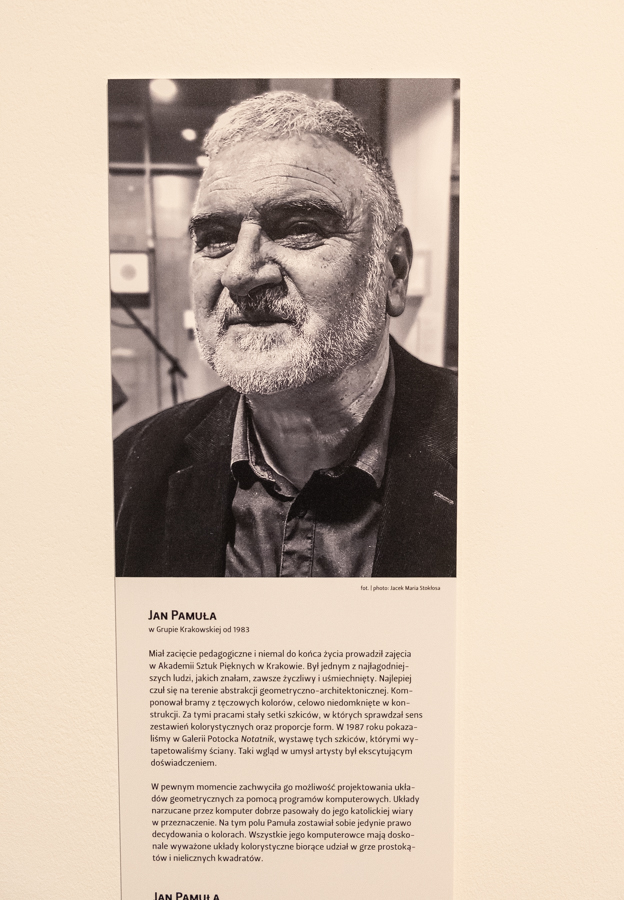
37_25
As I was looking at the works, I noticed a trio of visitors, a young woman with an older couple. She was speaking English with them. They took turns taking pictures of each other in front of one of Pamuła’s paintings, so I offered to take one (with their phone) of the three of them, an offer they gratefully accepted. I then spoke with the young woman, and it turned out that the late artist was her father, and the painting on display usually hangs in her living room. It was such a delightful encounter, and of course I asked her to pose for me in front of the painting:

37_26
Making my way back to the centre to attend an evening gala dinner, I caught this late afternoon light on Dominikańska Street:
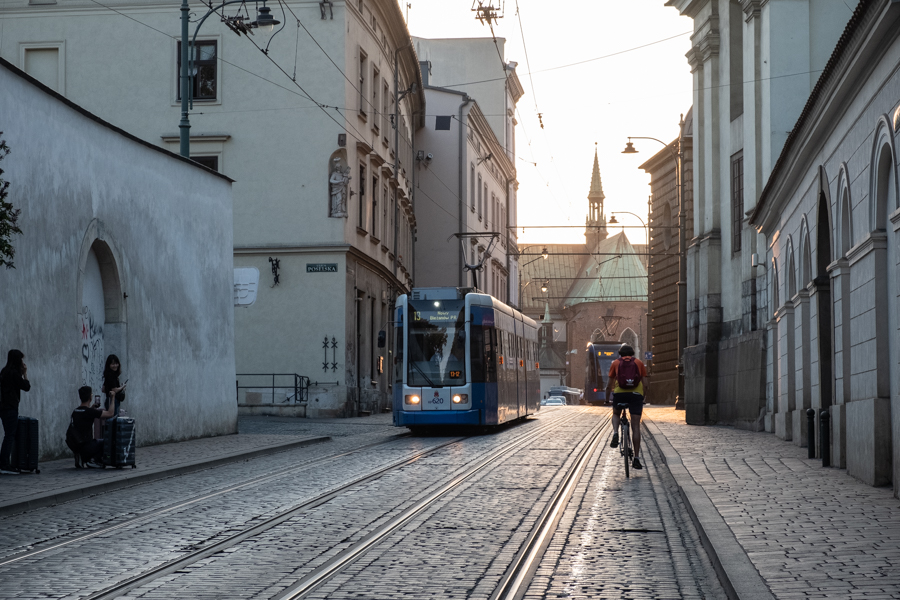
37_27
A sign of the times in these global warming times; a bar is advertising that the temperature inside is 20C (68F for the imperials):

37_28
I went to this bar to have a pint, a most pleasant place. The inscription, roughly translated, says that it is better to end up in beautiful craziness than in boring conformist miasma:
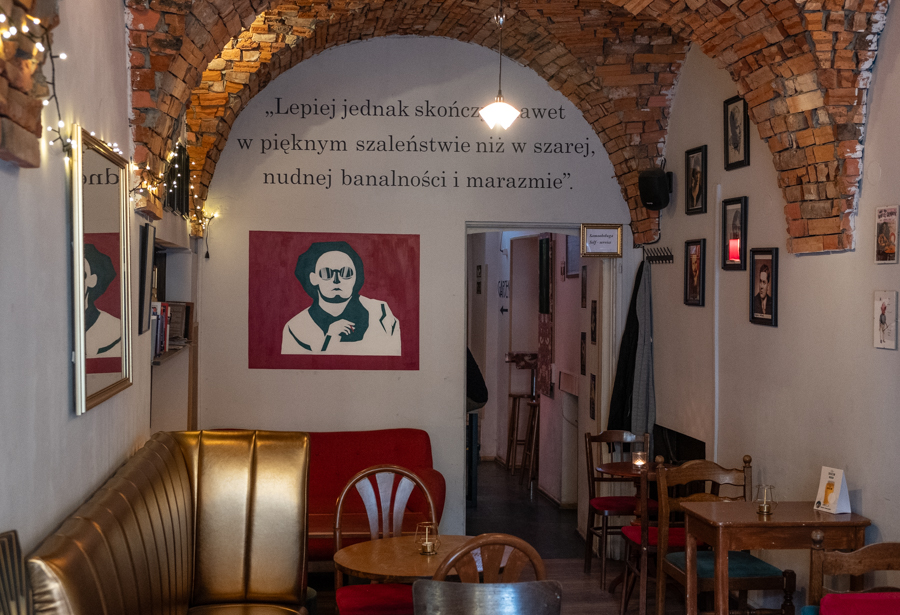
37_29
Across from the papal window on Franciszkańska Street there is a small park with a bench dedicated to the Polish pope’s successor, Benedict XVI:
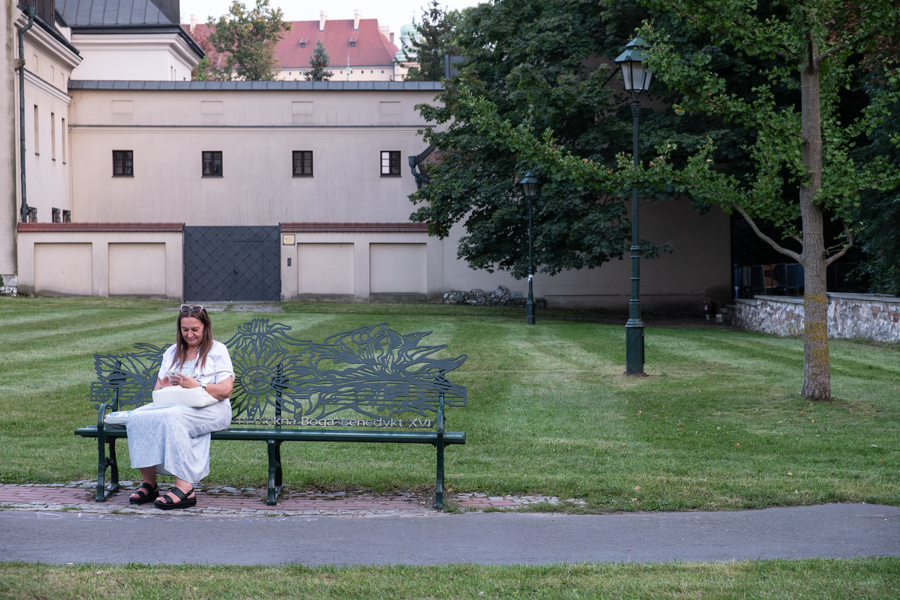
37_30
In the evening, we had the conference gala dinner at the national museum in Sukiennice (cloth hall), truly magnificent surroundings:

37_31
On Wednesday morning the conference continued in the less magnificent, functional surroundings of Auditorium Maximum, a modern conference centre built by the university:
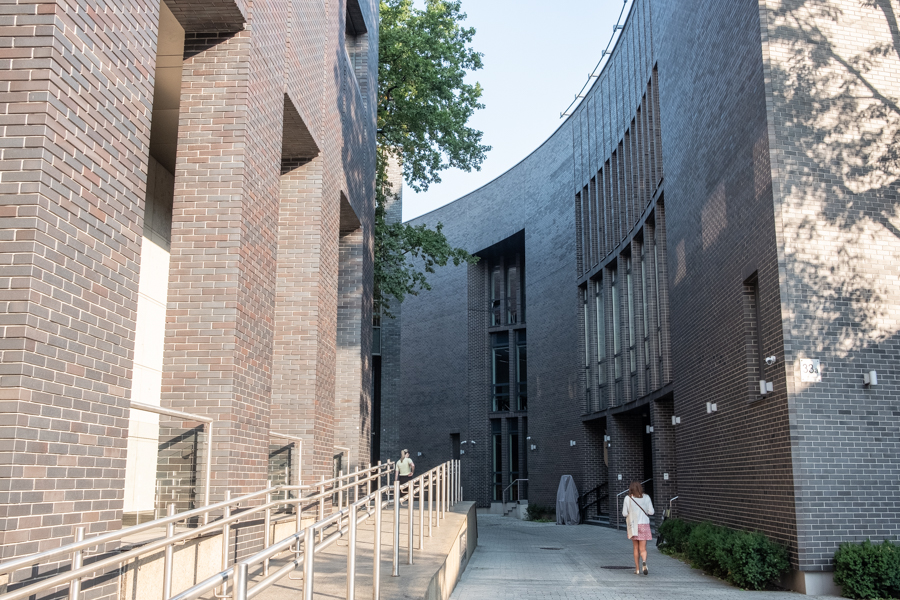
37_32
My colleague Michał was also at the conference; here he is presenting a paper:
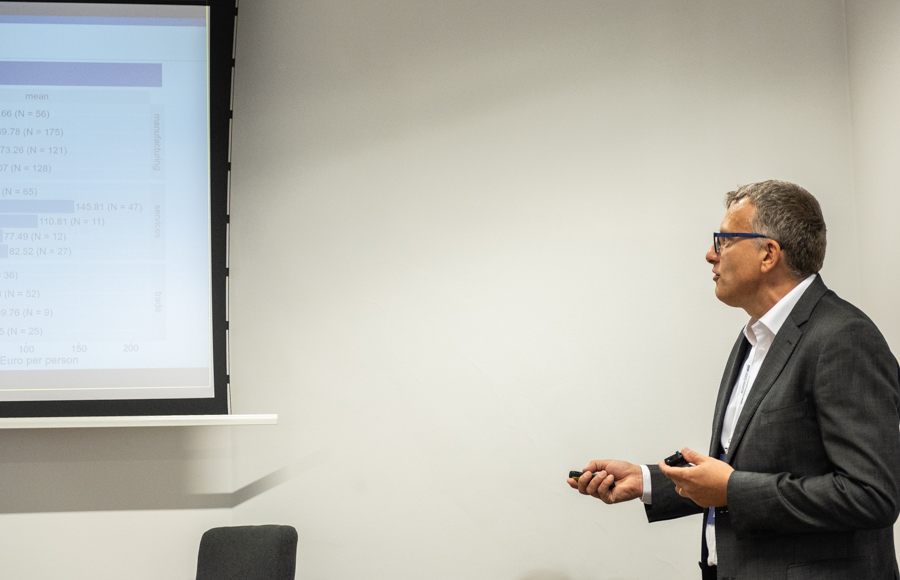
37_33
I had about 3 hours free in the middle of Wednesday, which I used to take the tram to Nowa Huta, a unique part of Kraków, 6-7 km from the centre. Nowa Huta means “new steelworks” in Polish. It was built from scratch in the 1950s and early 1960s to house the workers working at a huge new steel plant. It was designed for the new Communist age, with Stalinist architecture, no churches (this was reversed in the 1970s, when a church was built following a groundswell of popular demand), block housing etc. Today, the steelworks is long closed, and efforts have been made to make the place greener and more liveable. Still, Nowa Huta is rightly recommended by Lonely Planet as a place to visit the Communist past. I got off the tram on the Ronald Reagan Central Square; the original name was just Central Square, it was named after the late US president in 2004:
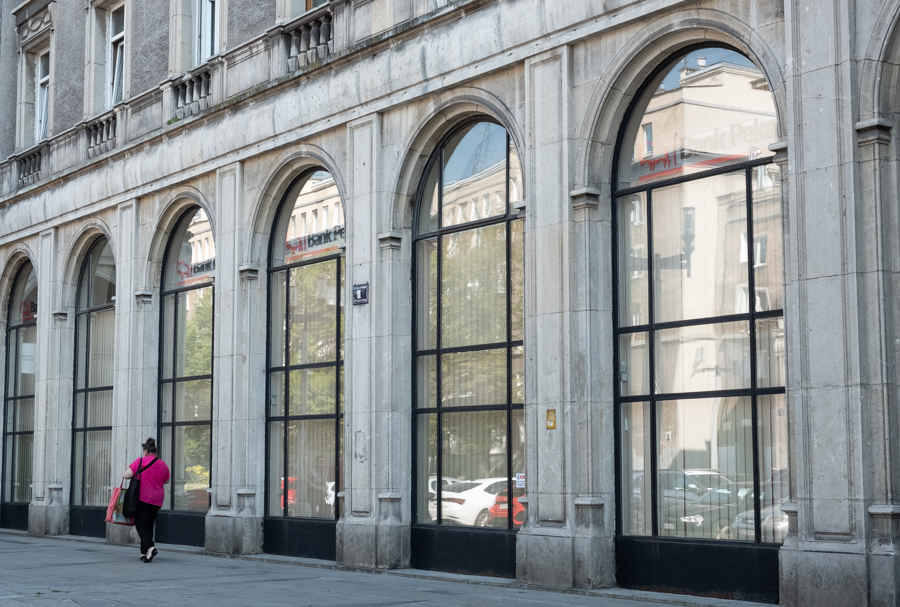
37_34
There is a tradition in Poland to plant trees to commemorate events. This Freedom Oak was planted in Nowa Huta in 2014 by the then president of Poland to commemorate the 25th anniversary of the fall of Communism:
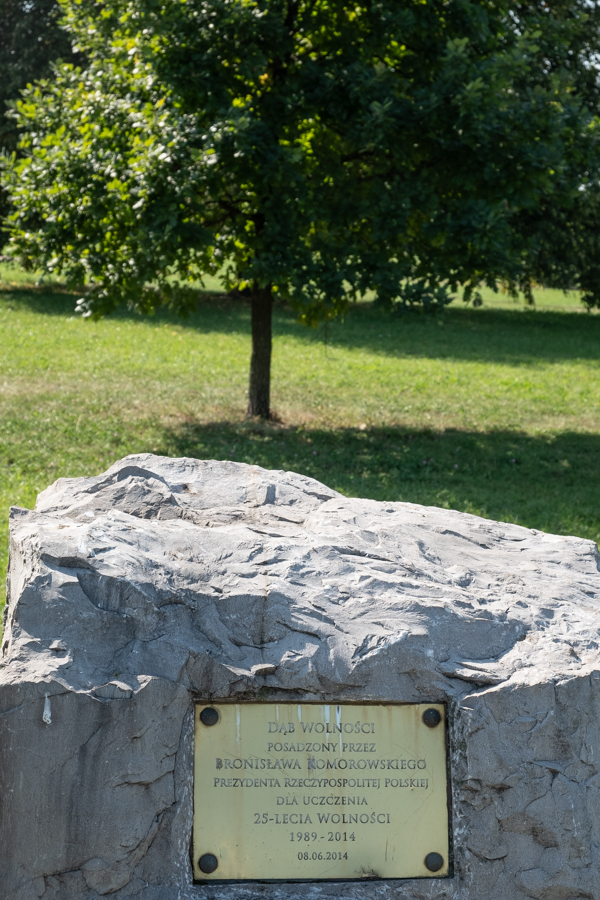
37_35
Emanating from the Central Square is Aleja Róż (Rose Avenue), designed to be a place for recreation and social life:
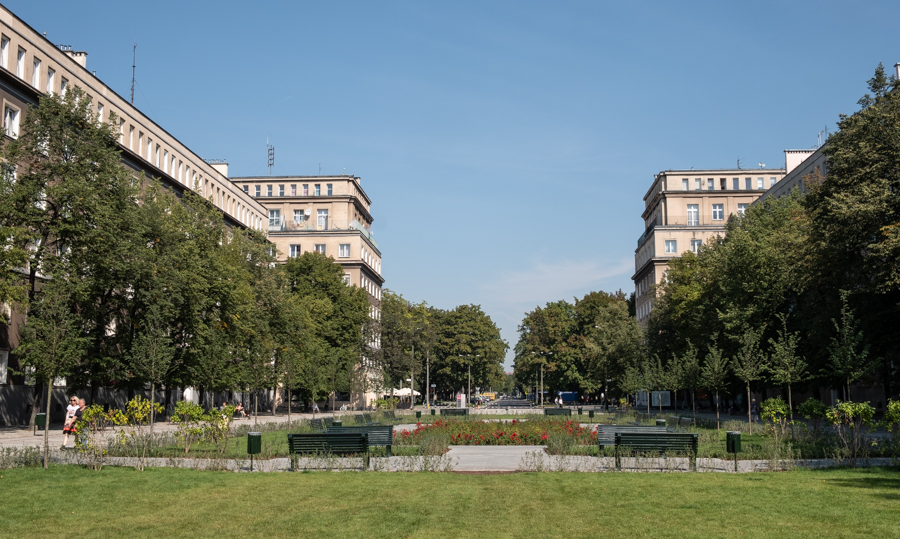
37_36
Many of the housing complexes in Nowa Huta have strictly functional names, such as “Complex A”, “Complex B” etc. But this one is called “the beautiful complex”, a name in stark contrast to the drabness of the building:
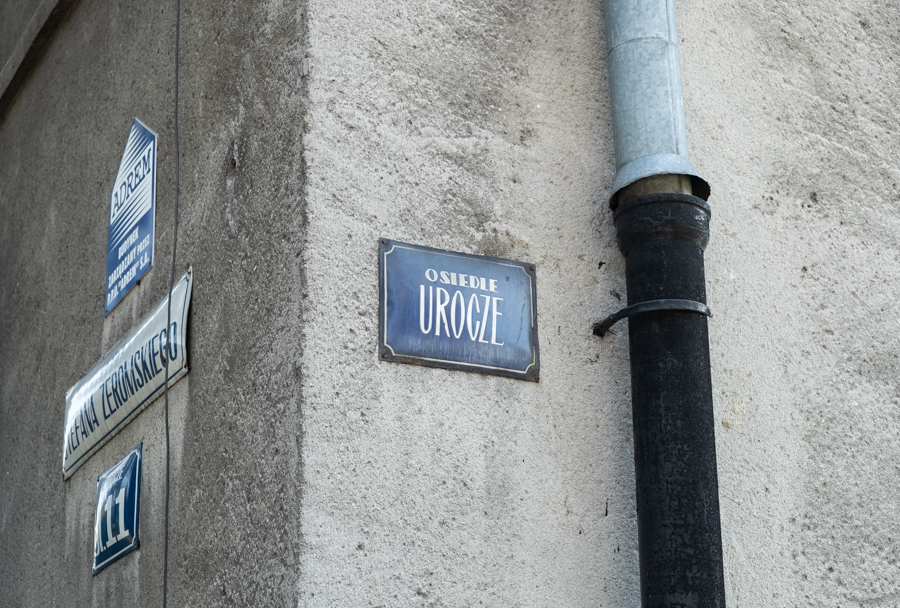
37_37
The Communist authorities which planned Nowa Huta in the 1950s did not want churches, but they did recognise the need for entertainment and culture, and so a theatre was built in Nowa Huta, and it is still in operation today. Called “The People’s Theatre”, it is apparently quite good and has always staged modern, even avant garde, plays:
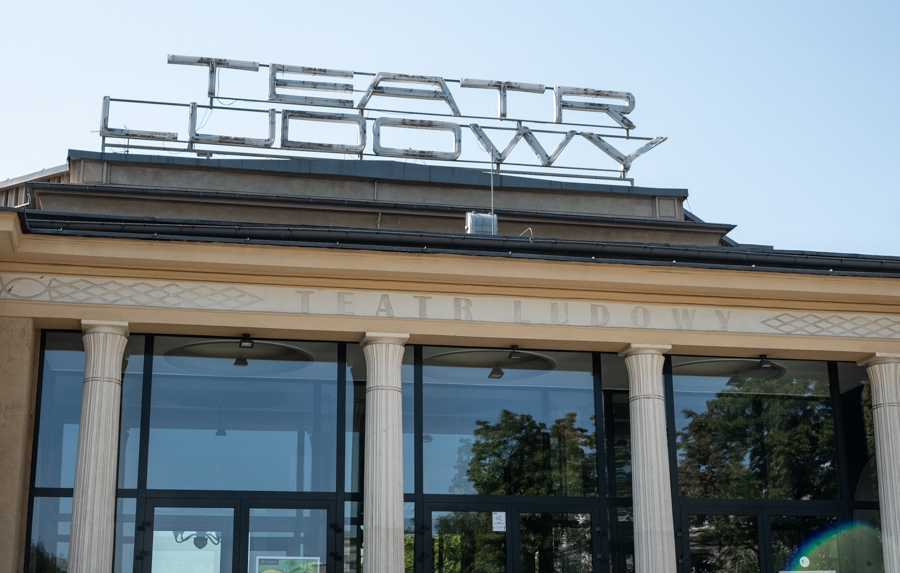
37_38
After my visit to Nowa Huta, I returned to the university for the closing of the conference, with Justyna having the final word:
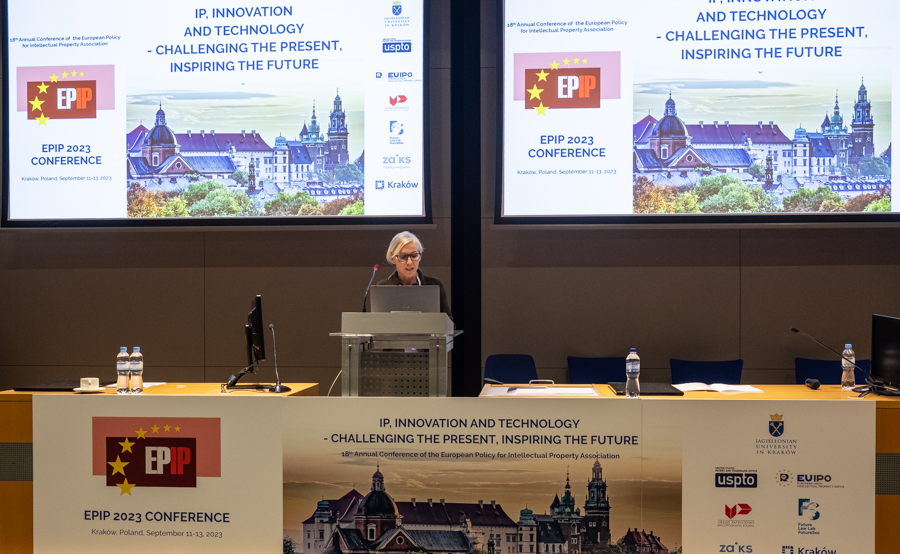
37_39
Thursday was my last day in Kraków, to be spent in the company of about 20 other economists working in Intellectual Property offices around the world. We always have an all-day meeting on the margins of the EPIP conference, taking advantage of the presence in one place. It was also the first day without sunshine–Rynek was rainy:
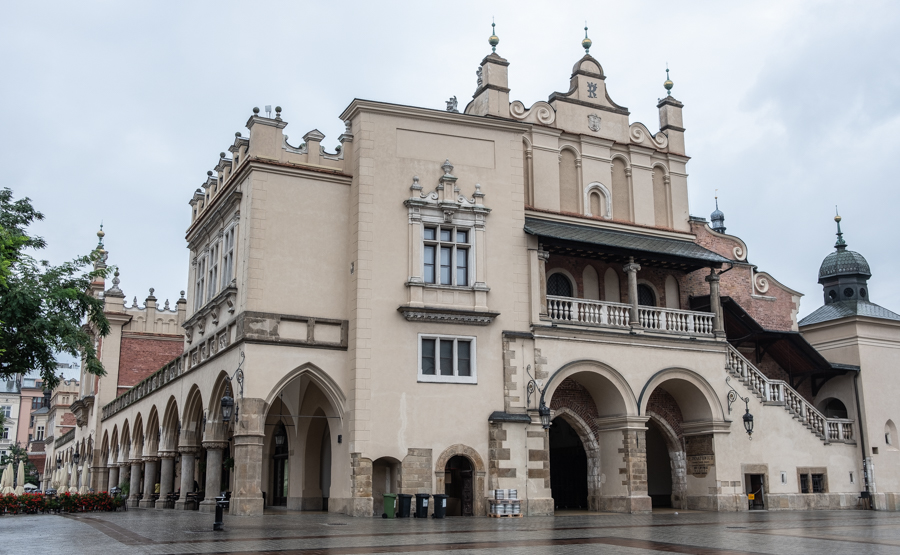
37_40
This is one of the striking features of Rynek, a sculpture called Eros Bendato by Polish sculptor Igor Mitoraj. It was donated to the city of Kraków in 2004:
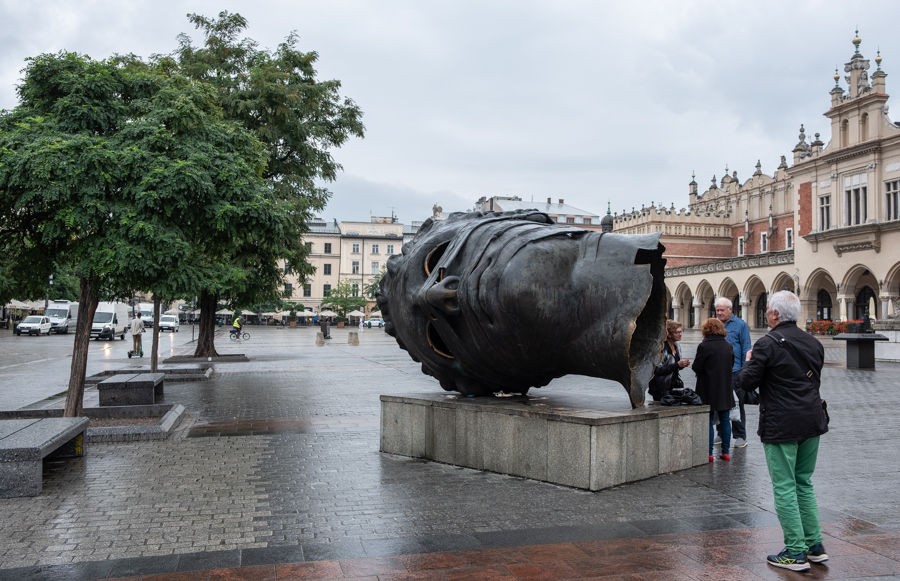
37_41
The meeting place was another university location, close to Rynek:
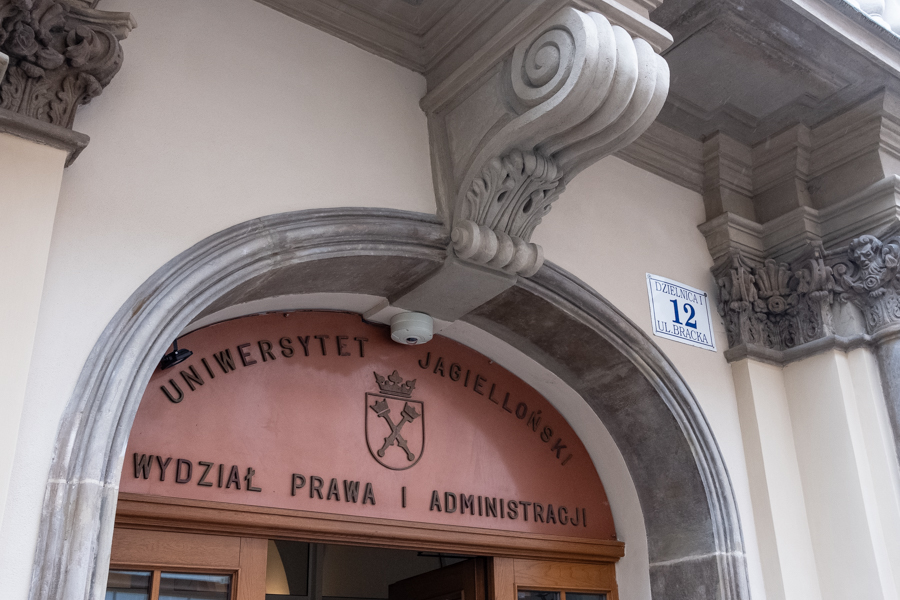
37_42
And this is how I spent the next several hours, with fellow economists from Austria, France, Germany, Switzerland, the UK, the US, Canada, Brazil, Japan, Singapore and Australia:
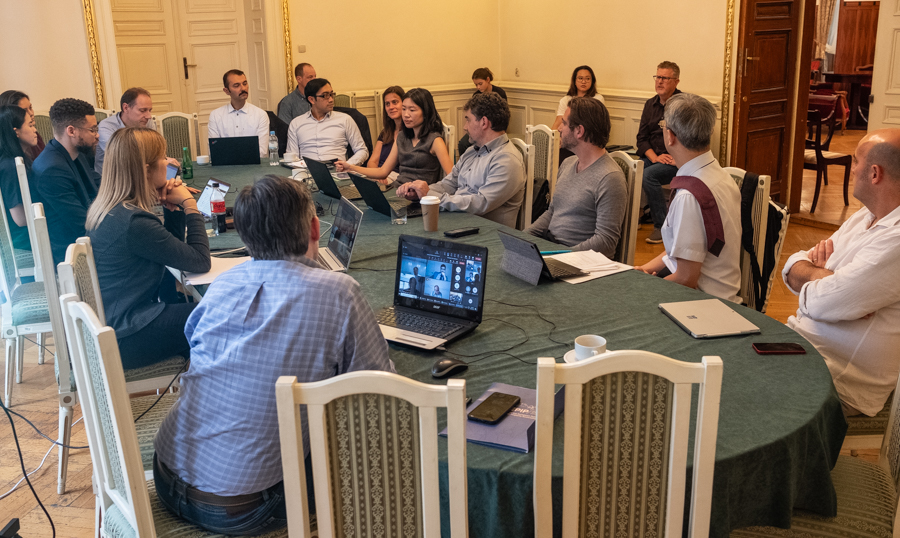
37_43
In late afternoon, I left the meeting, took a taxi to the train station, and travelled to Wrocław, the city where I was born and where my sister lives. I had taken Friday off to spend the weekend with my sister before flying home from there (thanks to Ryanair, I have direct flights between Alicante and several Polish cities). About 3 1/2 hours later, I arrived in Wrocław and immediately went into photography mode. A parked car was evidence that the Ukrainian refugees were welcomed by the Polish not just because of solidarity but also because they represent a source of labour. Here, drivers are being sought for Uber and an Eastern European equivalent, Bolt:
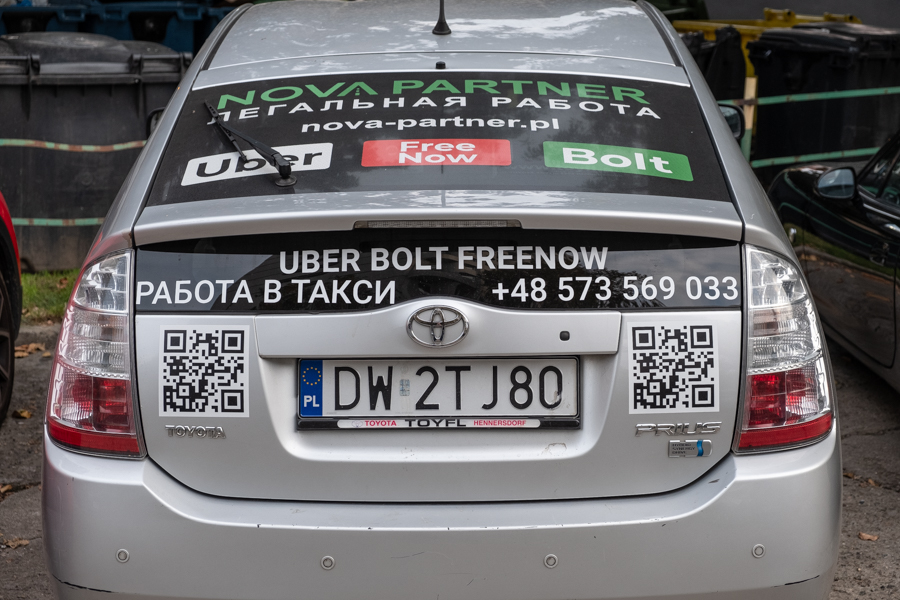
37_44
The next morning I went for a walk, enjoying the sunshine. This is an iconic view in Wrocław, on the right the Grunwaldzki Bridge spanning the Odra river, and the tall apartment buildings in the background are known as Wrocław’s Manhattan. They were built in the 1970s but have been renovated since. My sister has lived in one of these buildings for the past 45 years or so:
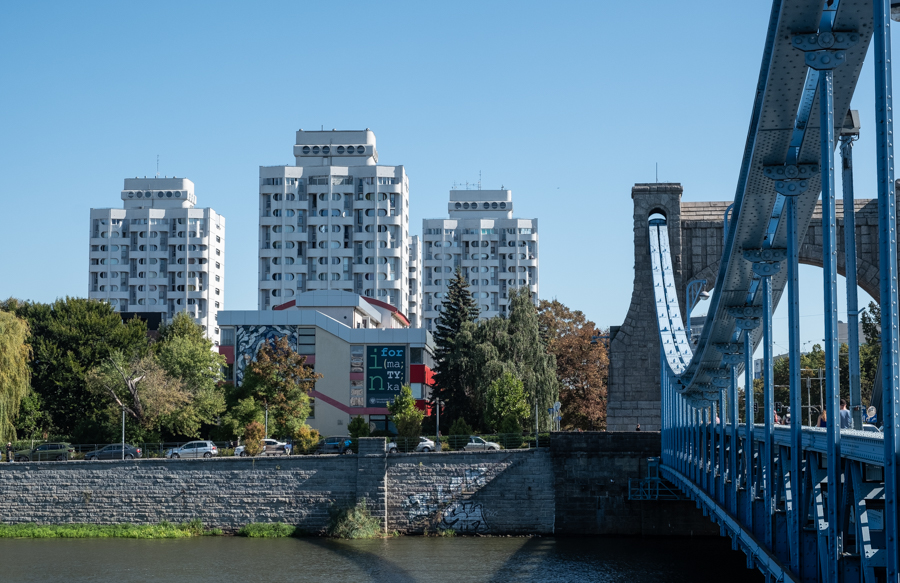
37_45
During the past decade, a new campus of the technical university has been built on the shore of the river, providing a nice visual contrast between the modern buildings and the cathedral on Ostrów Tumski, an island on the river housing almost exclusively church properties:

37_46
My sister lives on the 11th floor, and I love to look at the early morning views from her balcony. This is the Ronald Reagan Circle before sunrise:
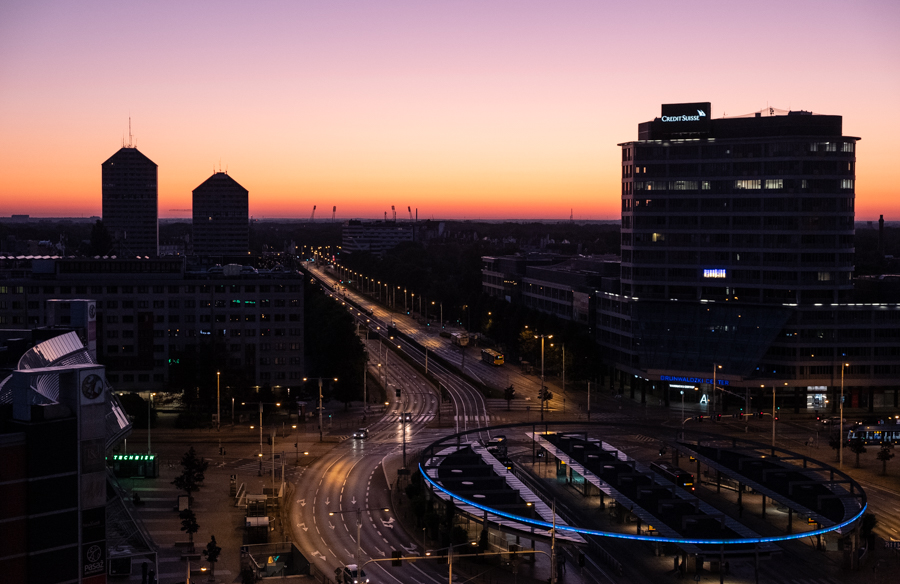
37_47
These two buildings are known as “the pencils”. As far as I know, they are mainly student housing:
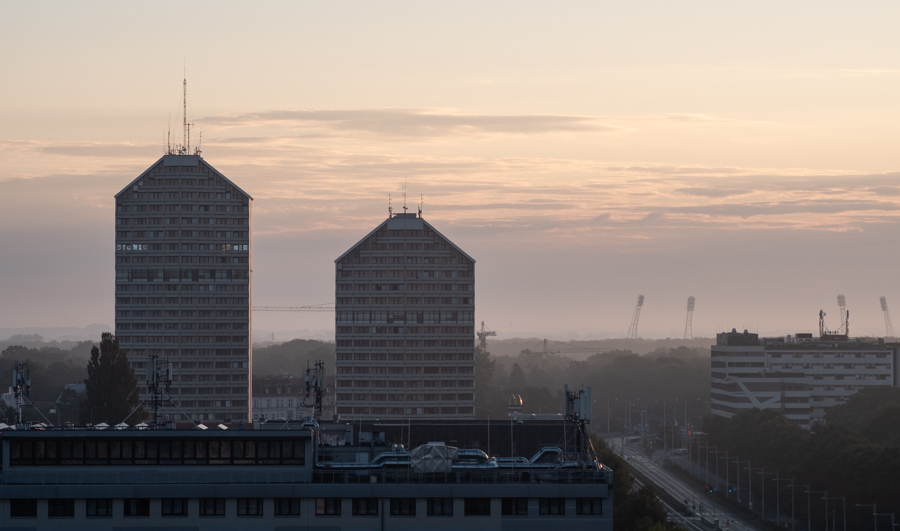
37_48
The Credit Suisse building (even though Credit Suisse does not exist anymore). Note the Ukrainian flag in one of the windows:
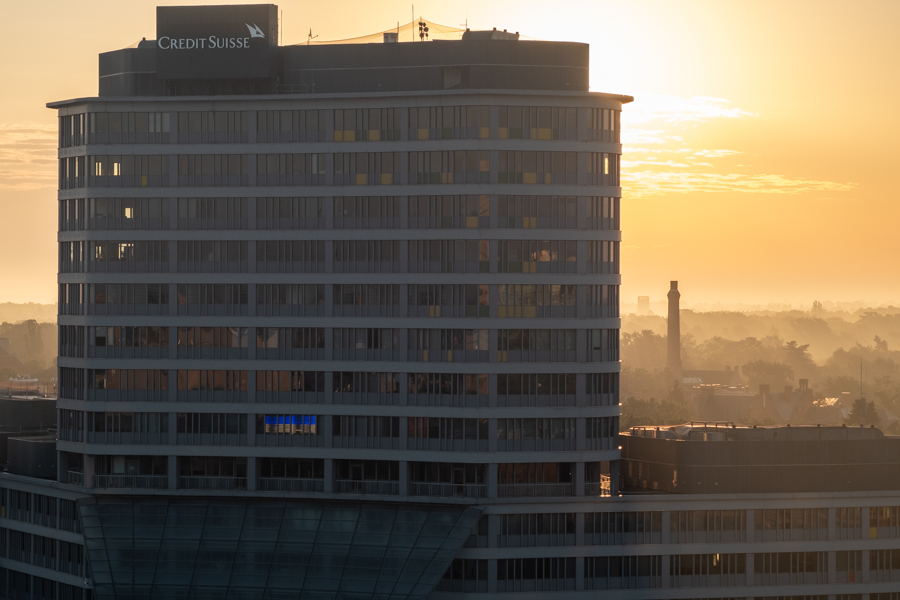
37_49
An outdoor exercise park has recently been installed near my sister’s apartment, and I was pleased to see her and my brother-in-law using the facilities. They have always led a sedentary life, and I have long been on their case to get them to exercise. Better late than never:
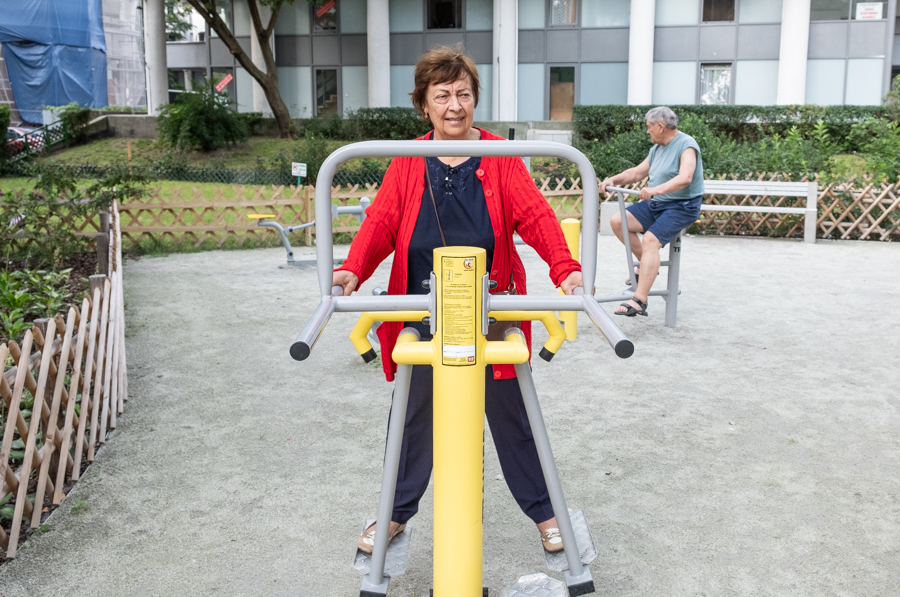
37_50
Like Kraków, Wrocław also has its Rynek. This building with a colourful façade used to house the publishing house where my father worked until we emigrated to Denmark in 1972:

37_51
And this building, today the tourist information office, used to be the Russian language bookshop, managed by my mother:

37_52
The gnome outside the tourist information office. These little statues have made Wrocław famous in Poland and beyond. They started in 2005 as an art project; today, there are 800 spread across the city. Many are placed by the city, others by private businesses. This one is obviously related to tourism:
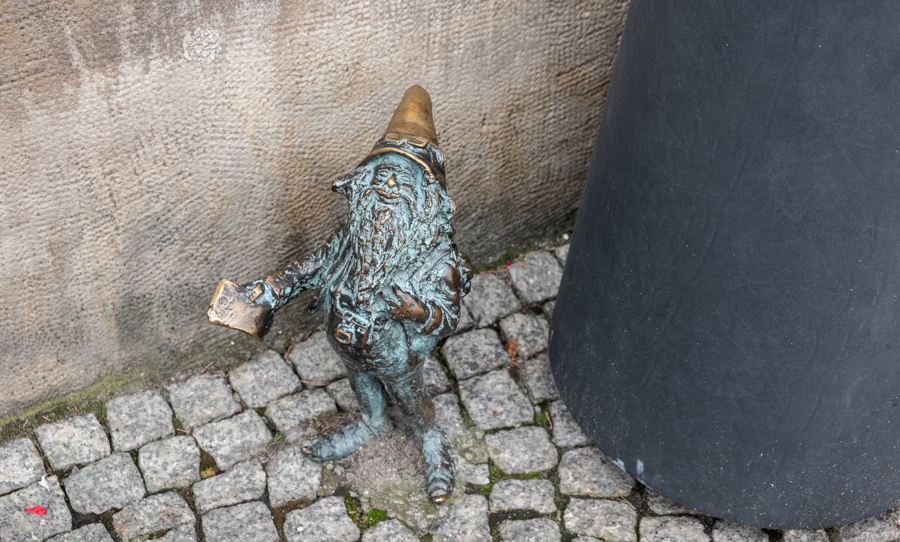
37_53
Sisyfos gnomes:

37_54
There is even a statistician gnome, outside the local office of the national bureau of statistics:
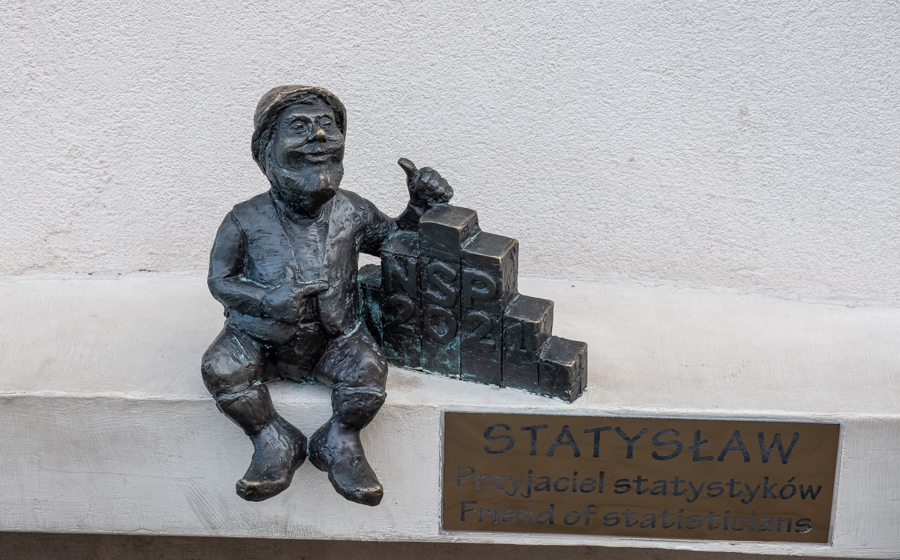
37_55
One day, on Rynek, there was this delightful scene of a young woman entertaining the children (and trying to earn money) with soap bubbles:
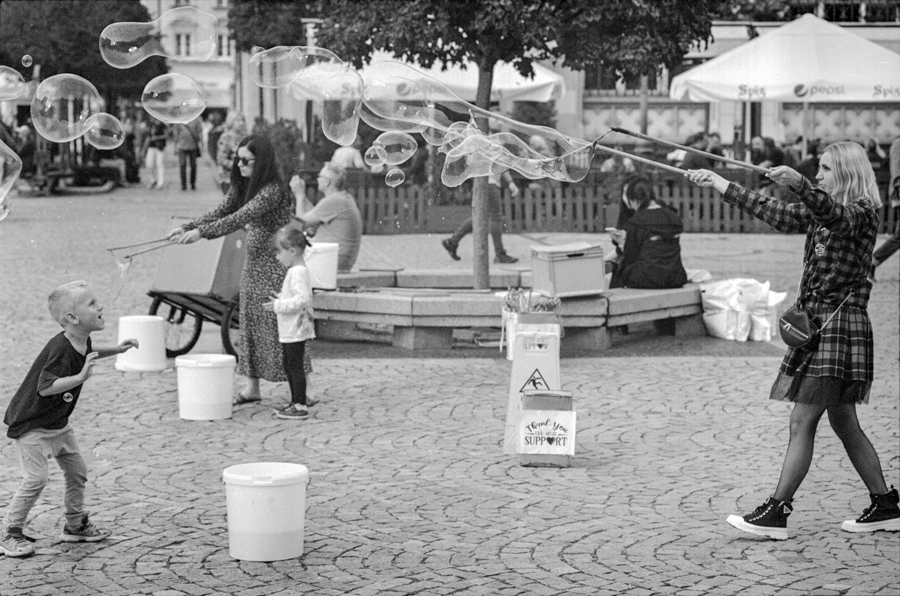
37_56
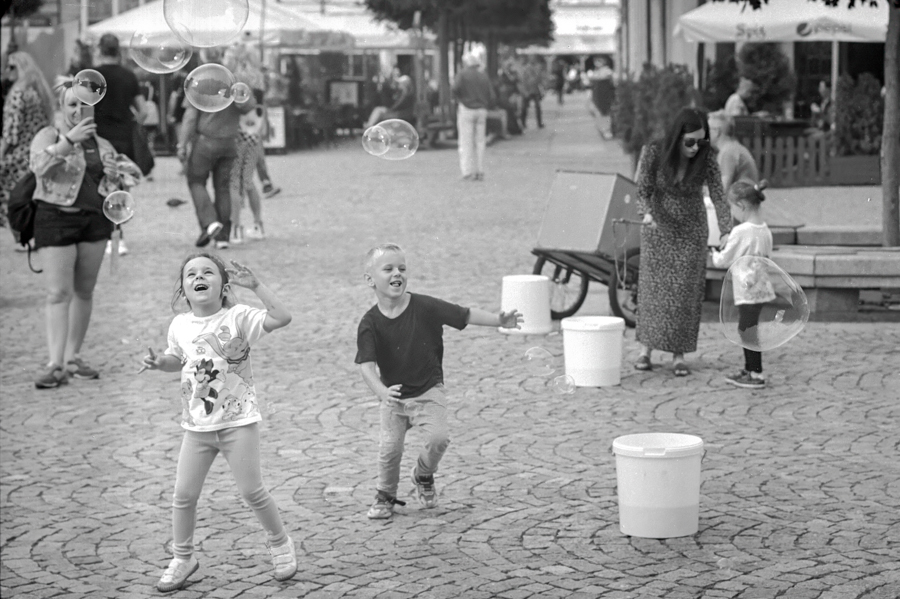
37_57
My sister’s neighbours have a cute dog which comes to visit from time to time:
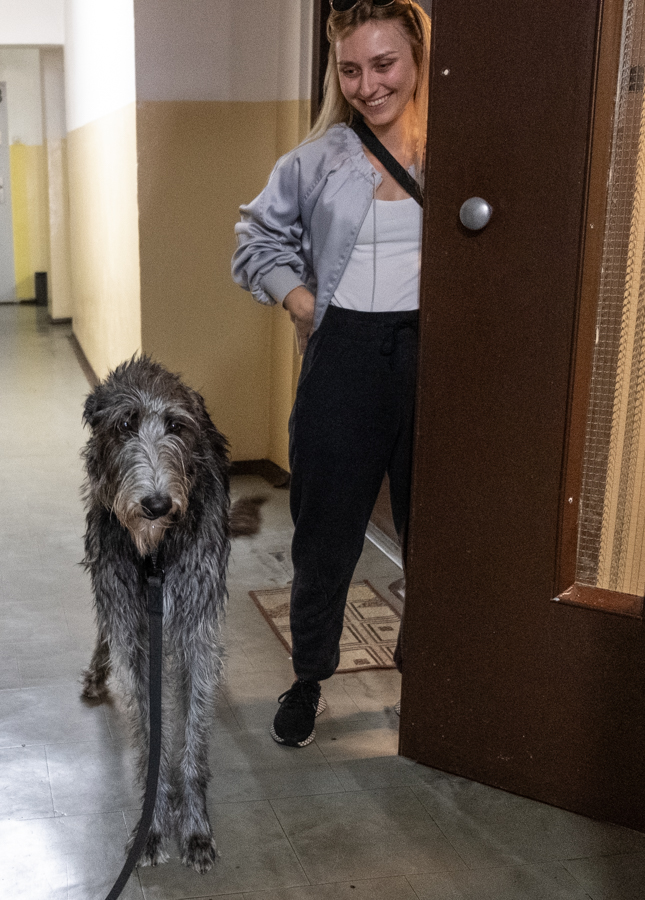
37_58
On Sunday I had my last lunch in Poland this time around, with all the things I love about Polish food–good bread, bigos, various sausages, herring, pierogi:
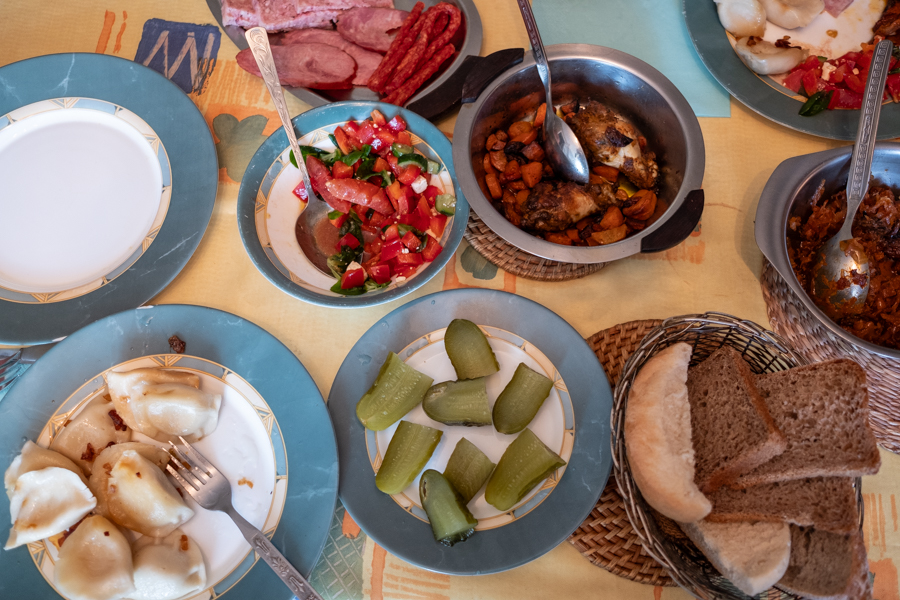
37_59
I finished my visit by making some informal portraits of my sister and brother-in-law:
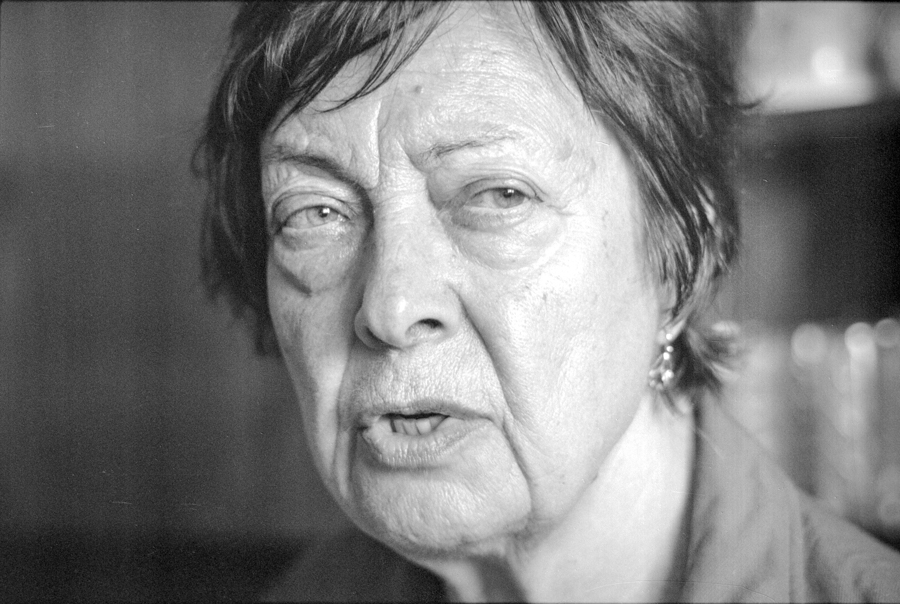
37_60
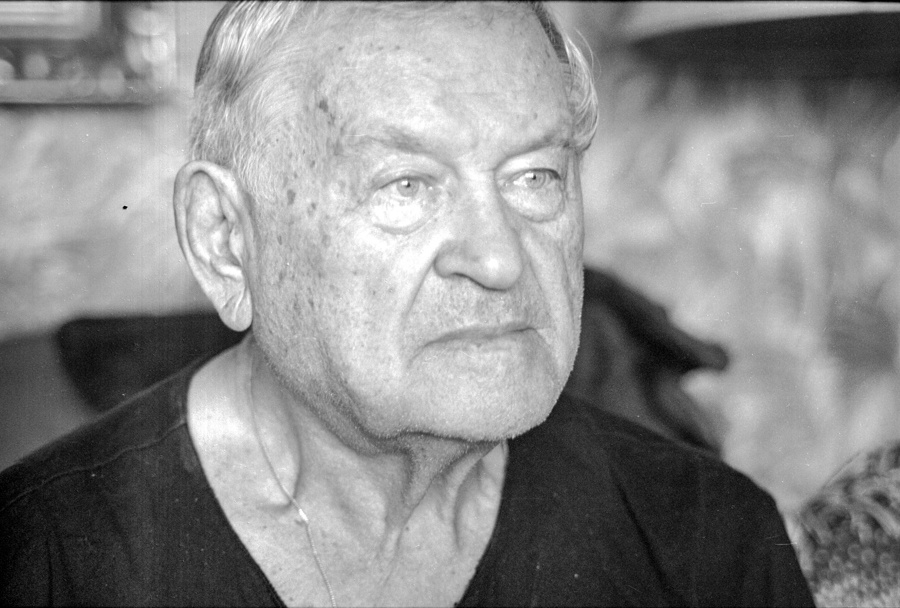
37_61
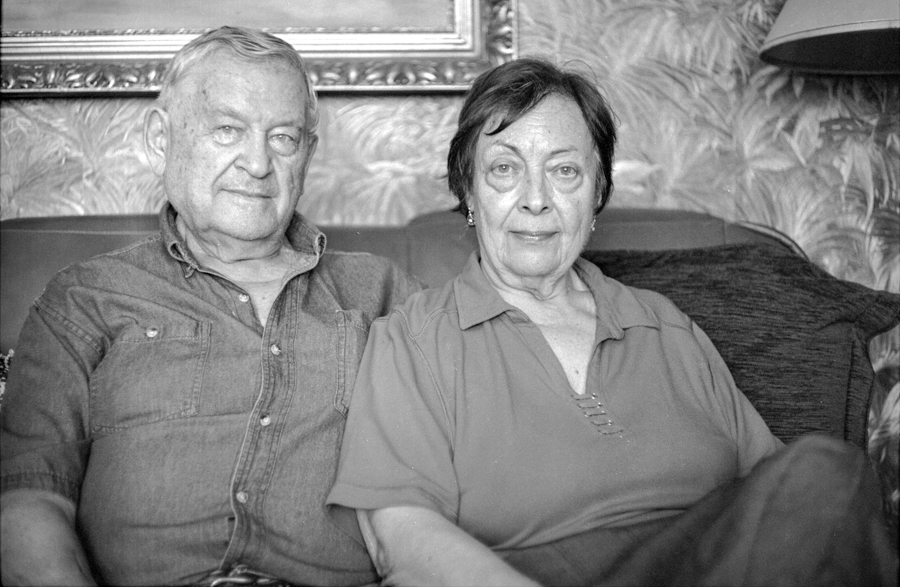
More photos from Kraków are here, and there is also a Wrocław gallery here.